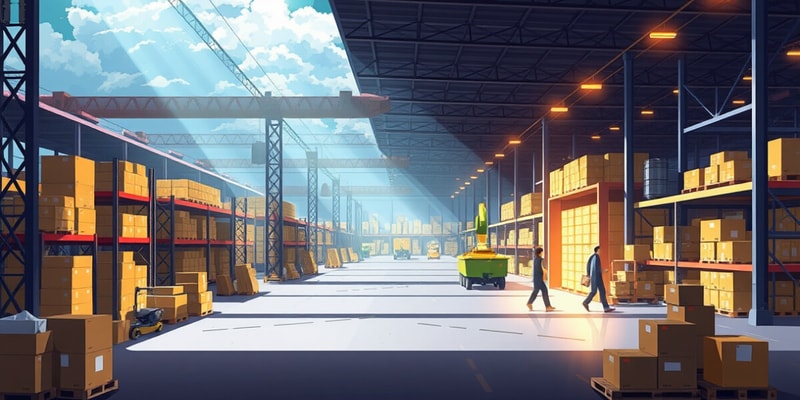Podcast Beta
Questions and Answers
means that a supplier can increase or decrease their production output in response to changes in order size or market demand. This might involve adding shifts, hiring temporary workers, or increasing machine usage. Suppliers that are not scalable may be unable to respond to spikes in demand, which can lead to customer dissatisfaction.
Scalability
is the total time from order placement to delivery. This includes processing time, production time, and shipping time. Longer lead times can hinder a company's ability to respond quickly to market demands, potentially resulting in missed opportunities.
Lead times
The ease with which goods can be transported to and from the supplier's location, including the availability of shipping routes and infrastructure. Suppliers located near major transportation hubs (like ports, airports, or highways) may offer more efficient shipping options.
Transportation Accessibility
The expenses associated with moving goods from the supplier to your location, influenced by distance and transportation modes. Transportation costs can significantly impact overall supply chain expenses and pricing strategies.
Signup and view all the answers
The legal and regulatory environment in the supplier's location, including trade laws, tariffs, and labor regulations. Different locations may have varying regulations that can affect costs, lead times, and the complexity of compliance.
Signup and view all the answers
The framework that outlines how responsibilities, roles, and reporting relationships are janized within the supplier's company. A clear and effective organizational structure can enhance decision-making, communication, and accountability.
Signup and view all the answers
The qualifications, experience, and vision of the supplier's leadership team. Strong leadership can drive strategic initiatives, foster innovation, and navigate challenges effectively.
Signup and view all the answers
The supplier's ability to utilize resources effectively to produce goods or services with minimal waste. High operational efficiency can lead to cost savings, quicker turnaround times, and improved product quality.
Signup and view all the answers
The extent to which the supplier leverages technology and innovation to enhance their operations and offerings. Suppliers that embrace technology are often more efficient and better positioned to meet evolving market demands.
Signup and view all the answers
The supplier's dedication to building and maintaining a collaborative relationship rather than treating transactions as one-off events. A committed supplier is more likely to invest in your needs, contribute to problem solving, and engage in joint initiatives.
Signup and view all the answers




